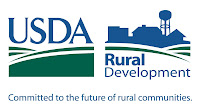RD Has Funds!!!

Rural Development has received additional Guaranteed Single-Family Housing Loan funds in the amount of $2.5 billion. They are able to begin to issue Conditional Commitments on loans subject to the availability of funds as follows: The guarantee fee for purchase transactions will be 3.5 percent The guarantee fee for refinance transactions will be 2.25 percent If have any buyers who have been waiting for it to come back, it's time to start shopping again!!! Click here for more detailed information.




